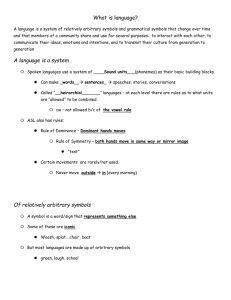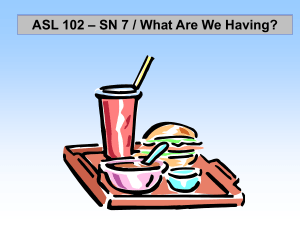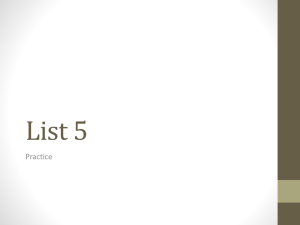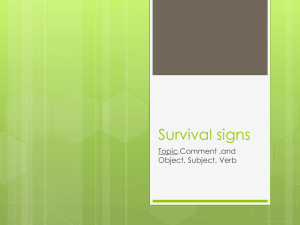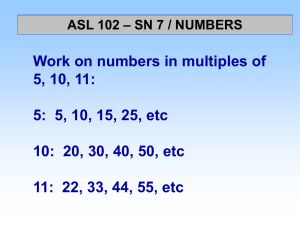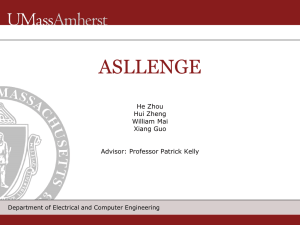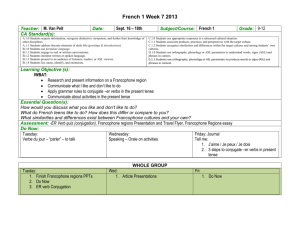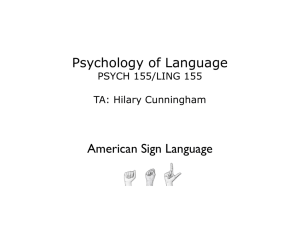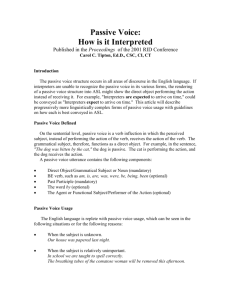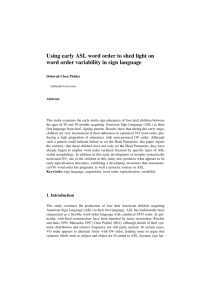ASL – Grammar Worksheet
advertisement
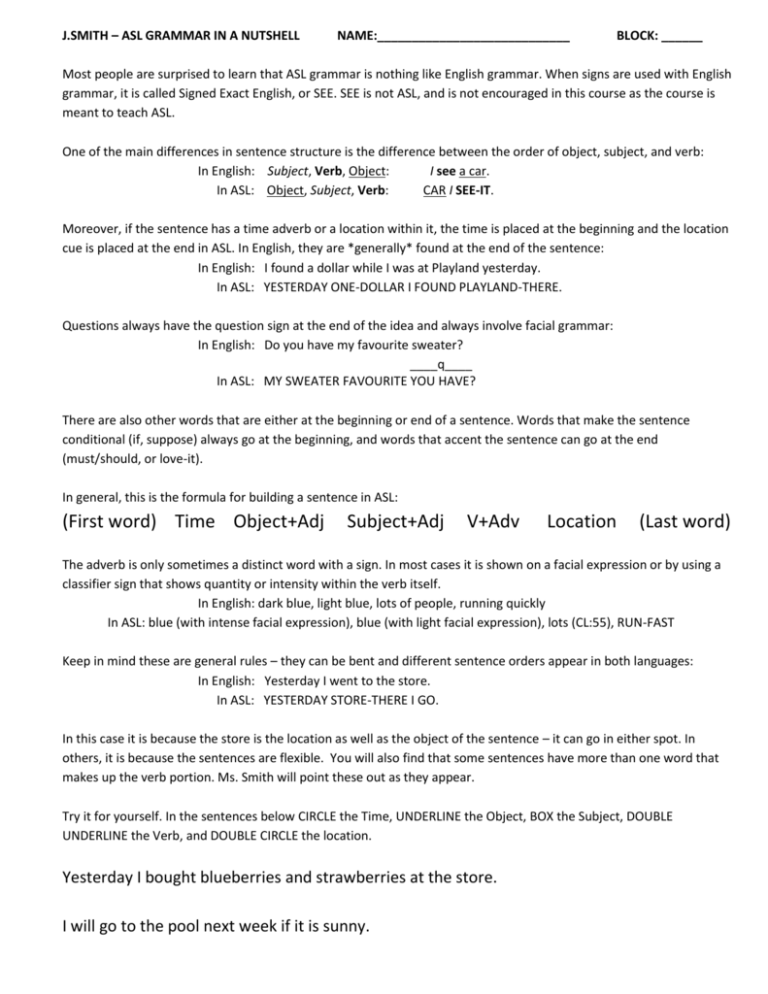
J.SMITH – ASL GRAMMAR IN A NUTSHELL NAME:____________________________ BLOCK: ______ Most people are surprised to learn that ASL grammar is nothing like English grammar. When signs are used with English grammar, it is called Signed Exact English, or SEE. SEE is not ASL, and is not encouraged in this course as the course is meant to teach ASL. One of the main differences in sentence structure is the difference between the order of object, subject, and verb: In English: Subject, Verb, Object: I see a car. In ASL: Object, Subject, Verb: CAR I SEE-IT. Moreover, if the sentence has a time adverb or a location within it, the time is placed at the beginning and the location cue is placed at the end in ASL. In English, they are *generally* found at the end of the sentence: In English: I found a dollar while I was at Playland yesterday. In ASL: YESTERDAY ONE-DOLLAR I FOUND PLAYLAND-THERE. Questions always have the question sign at the end of the idea and always involve facial grammar: In English: Do you have my favourite sweater? ____q____ In ASL: MY SWEATER FAVOURITE YOU HAVE? There are also other words that are either at the beginning or end of a sentence. Words that make the sentence conditional (if, suppose) always go at the beginning, and words that accent the sentence can go at the end (must/should, or love-it). In general, this is the formula for building a sentence in ASL: (First word) Time Object+Adj Subject+Adj V+Adv Location (Last word) The adverb is only sometimes a distinct word with a sign. In most cases it is shown on a facial expression or by using a classifier sign that shows quantity or intensity within the verb itself. In English: dark blue, light blue, lots of people, running quickly In ASL: blue (with intense facial expression), blue (with light facial expression), lots (CL:55), RUN-FAST Keep in mind these are general rules – they can be bent and different sentence orders appear in both languages: In English: Yesterday I went to the store. In ASL: YESTERDAY STORE-THERE I GO. In this case it is because the store is the location as well as the object of the sentence – it can go in either spot. In others, it is because the sentences are flexible. You will also find that some sentences have more than one word that makes up the verb portion. Ms. Smith will point these out as they appear. Try it for yourself. In the sentences below CIRCLE the Time, UNDERLINE the Object, BOX the Subject, DOUBLE UNDERLINE the Verb, and DOUBLE CIRCLE the location. Yesterday I bought blueberries and strawberries at the store. I will go to the pool next week if it is sunny. As you can see, it is not as simple as labelling parts of a sentence! There are many ways to say the same thing, and different parts of a sentence can be different parts of others. Keep practicing. For the following sentences, draw a CIRCLE around the Time, UNDERLINE the Object, BOX the Subject, DOUBLE UNDERLINE the Verb, and DOUBLE CIRCLE the location. THEN, place them in ASL word order. 1. Jamie wants an “A” in term 2. 2. Dylan should come to class more to get an “A”. 3. Sara has a concussion. 4. Jessie is tired. 5. Nik plays a lot of hockey. 6. Star ran slowly. 7. Debbie works in a restaurant. 8. Clark is often sleepy in ASL class. 9. Rose works hard in ASL class. 10.Leanne sings in the choir. 11.Lauren likes to wear hats to school. 12. Often it rains in BC. 13. Rahim loves to play soccer.

